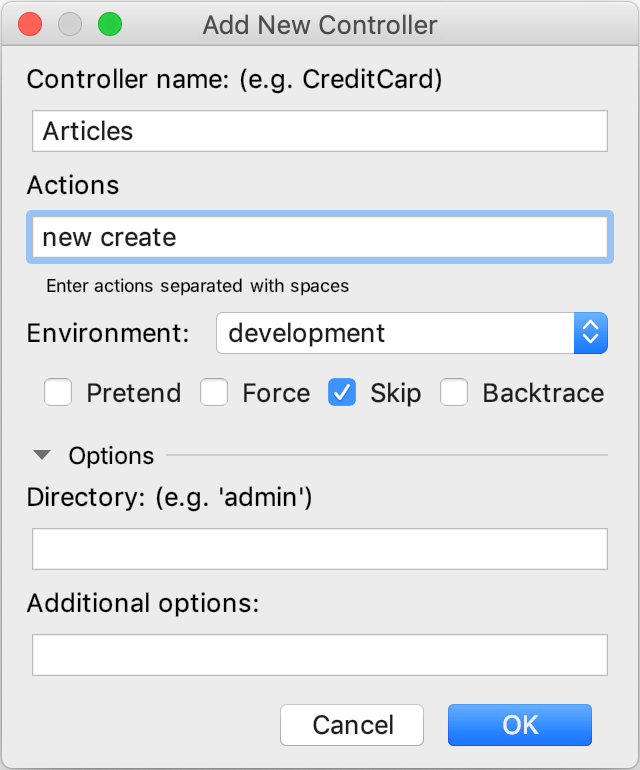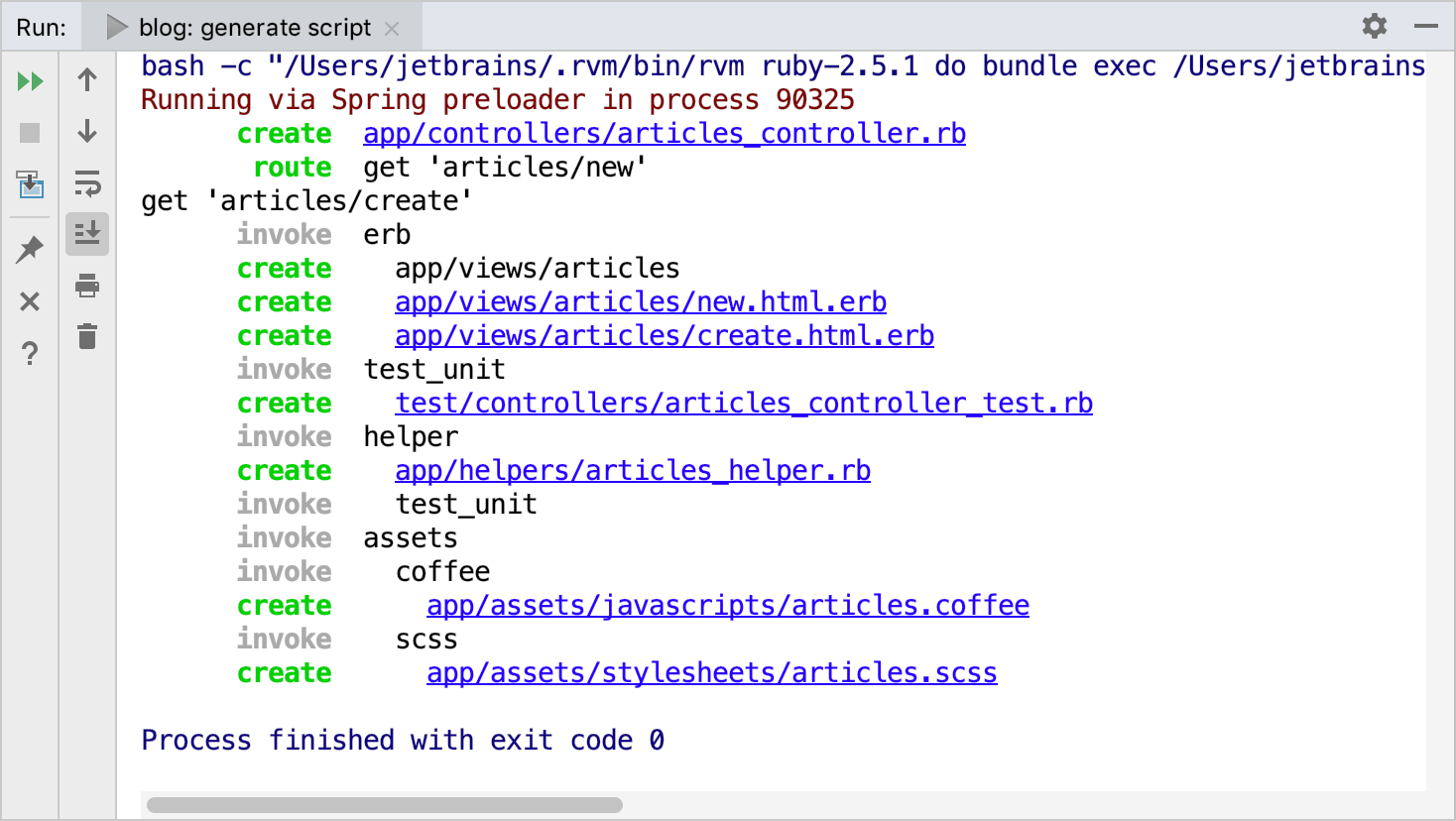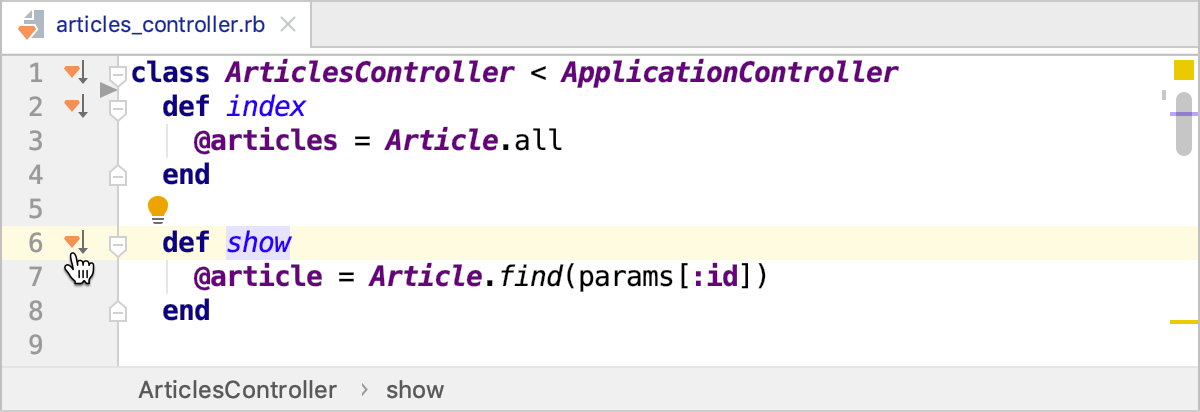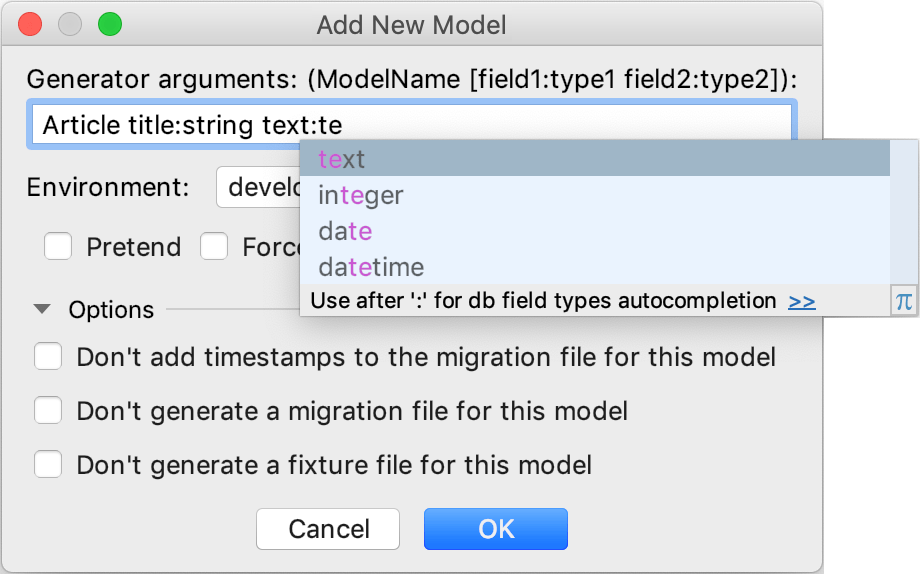Create Rails application elements
RubyMine helps you populate Rails applications with the stubs of all the required elements: controllers, views, models, and so on. You can launch Rails generators in several ways:
Press Ctrl twice and start typing a required command or its part (for example, rails g controller). Then, select this command from the suggestion list and press Enter.
Use the Tools | Run Rails Generator menu command.
In the main menu, go to File | New AltInsert and select Rails Generator.
In this topic, we’ll show you several examples on how to create Rails application elements.
To generate a controller and optionally its actions, do the following:
Press Ctrl twice and start typing rails g controller. Select
rails g controllerand press Enter.In the invoked Add New Controller dialog, specify the controller name. Optionally, add the action names separated by spaces (for example, new create). Click OK.

tip
Additional options allow you to provide additional arguments. For example, you can add the --no-test-framework argument.
RubyMine generates required files (a controller, view, and other) and displays output in the Run tool window.

You can click any file to quickly open it in the editor.
You can create a view for a specified controller action right in the editor. To do this:
Open a controller file in the editor.
Locate the desired action and click the
icon in the left gutter of the editor.

If a view associated with the method exists, it is opened in the editor. If a view doesn't exist, RubyMine suggests creating a new one.

Specify the name of the view file and click OK. Note that you can create ERB or Haml view.
To create a model, perform the following steps:
Press Ctrl twice and start typing rails g model. Select
rails g modeland press Enter.In the invoked Add New Model dialog, specify the model name, attributes and its types (for example, Article title:string text:text). Click OK.
tip
Press CtrlSpace to complete attribute types.

RubyMine generates required files (a model and migration) and displays output in the Run tool window.

You can click any file to quickly open it in the editor.
tip
To see a dependency diagram for the created model, press CtrlAltShift0U, select Rails Model Dependency Diagram in the invoked popup and press Enter. Learn more at Show a Rails model diagram.